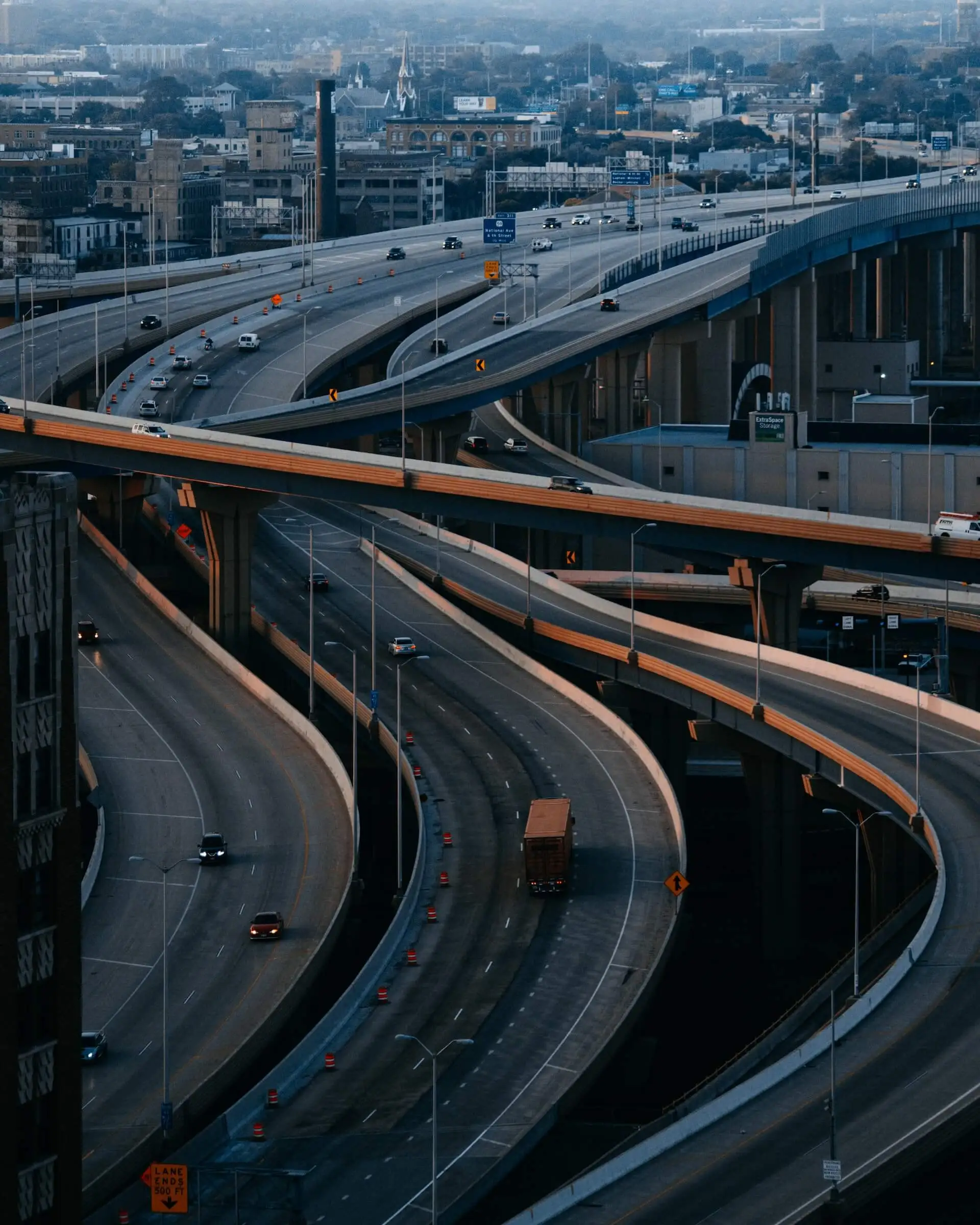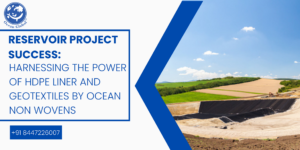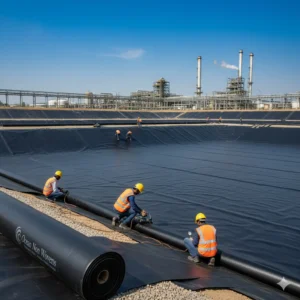Case Study: AV Gas Project, IOCL – Paradip, Odisha
Introduction
India’s energy sector is undergoing a critical transformation, focusing on infrastructure modernization, environmental compliance, and safe fuel storage. A prime example of this evolution is the AV Gas (Aviation Gasoline) Project by Indian Oil Corporation Limited (IOCL), located in Paradip, Odisha—a region vital to India’s fuel logistics on the eastern coast.
As part of this strategic project, Ocean Non Wovens was entrusted with supplying and installing Ocean HDPE Liner – 1500 Micron, a high-performance geomembrane used for safe and leak-proof fuel containment. With a total installation area of 600 square meters, this deployment played a pivotal role in bolstering the project’s long-term integrity and compliance with regulatory standards.
Table of Contents
Project Overview: Why the AV Gas Project Matters
The AV Gas Project at IOCL’s Paradip refinery aims to bolster the supply chain for aviation fuel, particularly 100 LL (Low Lead) grade aviation gasoline, essential for piston engine aircraft used in training, agricultural, and defense sectors. Until recently, India relied heavily on imports for this fuel. The AV Gas project is a major step toward self-reliance in aviation fuel production, aligning with the government’s “Make in India” initiative (Source: PIB, 2022).
Given the volatile and flammable nature of aviation fuel, secure storage and containment systems are of utmost importance. This is where geosynthetics, especially HDPE liners, come into the picture.
Why Ocean HDPE Liner 1500 Micron Was Ideal for This Project
The Ocean HDPE Liner – 1500 Micron is a robust geomembrane engineered for high chemical resistance, UV durability, and superior puncture resistance, making it an ideal choice for petroleum and aviation fuel containment applications. Here’s why it stood out for the IOCL AV Gas Project:
- Thickness & Strength: At 1500 microns (1.5mm), the liner offers enhanced resistance to stress cracking and mechanical damage during installation or fuel loading/unloading activities.
- Chemical Compatibility: It is resistant to hydrocarbons, oils, and solvents—essential for long-term containment of aviation-grade fuel (Source: GRI-GM13 Standard).
- Leak Prevention: HDPE liners are known for their extremely low permeability, minimizing the risk of underground fuel leakage and groundwater contamination.
- Longevity: With a projected lifespan of over 25 years when exposed and even longer when buried, it provides long-term value with minimal maintenance.
These properties made it a fit-for-purpose solution for a high-stakes infrastructure project like AV Gas.
Execution Challenges and On-Site Expertise
Though the quantity used was 600 SQM, the installation complexity was significant due to stringent safety norms in place at petroleum and fuel storage sites.
Challenges Faced:
- Working within a live fuel facility meant heightened safety and hazard control protocols.
- Paradip’s humid coastal climate presented challenges in achieving optimal welding conditions for the HDPE liner.
- The base preparation required high precision to avoid liner damage during installation.
To address these, our technical team:
- Deployed experienced welders and quality control engineers trained in petroleum-site safety standards.
- Used automated wedge welding machines for seam joining, followed by dual-track vacuum testing for each weld line.
- Ensured the substrate was prepared to specification with no sharp debris or moisture entrapment.
This ensured the liner was installed to international safety and quality benchmarks, contributing to the project’s successful commissioning.
The Importance of Geosynthetics in AV Gas Infrastructure
While much is written about tanks and pipelines in fuel infrastructure, geosynthetics like HDPE liners play a foundational role in environmental safety—a topic often overlooked in public project reports.
HDPE liners help:
- Prevent soil and groundwater contamination from fuel seepage.
- Comply with CPCB (Central Pollution Control Board) guidelines on fuel storage pits.
- Reduce the need for complex and expensive concrete containment structures.
Such liners are not just accessories but critical infrastructure components, especially for hazardous and flammable liquids like AV Gas.
Environmental and Regulatory Compliance
The AV Gas Project was subject to strict regulatory scrutiny due to the nature of the material handled. Our Ocean HDPE Liner conforms to:
- BIS IS 15351:2008 standards for geomembranes.
- GRI-GM13 international test protocols.
- IOCL’s internal quality and HSE (Health, Safety, and Environment) parameters.
We also provided comprehensive documentation, QA/QC logs, and third-party lab certifications to ensure transparent compliance.
Looking Ahead: Paradip as a Fuel Hub
With the AV Gas facility becoming operational, Paradip is now emerging as a key fuel export and aviation logistics node on the east coast. IOCL’s investment is expected to reduce India’s dependency on imports, lower costs for training and defense sectors, and catalyze growth in aviation infrastructure.
Projects like these highlight the strategic importance of reliable geosynthetic solutions in national infrastructure.
Why Choose Ocean Non Wovens
At Ocean Non Wovens, we’re not just material suppliers—we’re project partners who understand the mission-critical nature of industrial and environmental infrastructure. From aviation fuel containment to landfills, reservoirs, and mining, our range of HDPE liners, geotextiles, GCLs, and erosion control solutions are backed by real-world expertise and certified quality.
With over a decade of experience and hundreds of completed projects across India and abroad, Ocean Non Wovens is your trusted ally in geosynthetics.
Looking for reliable HDPE liner solutions? Contact us today to partner on your next project.



